How to find your next tech job
Whether you’re daydreaming about quitting your job or just need some career inspiration, sometimes it’s good to know what’s out there.
Here are my go-to resources and pro tips for finding out who’s hiring:
1. Company Websites
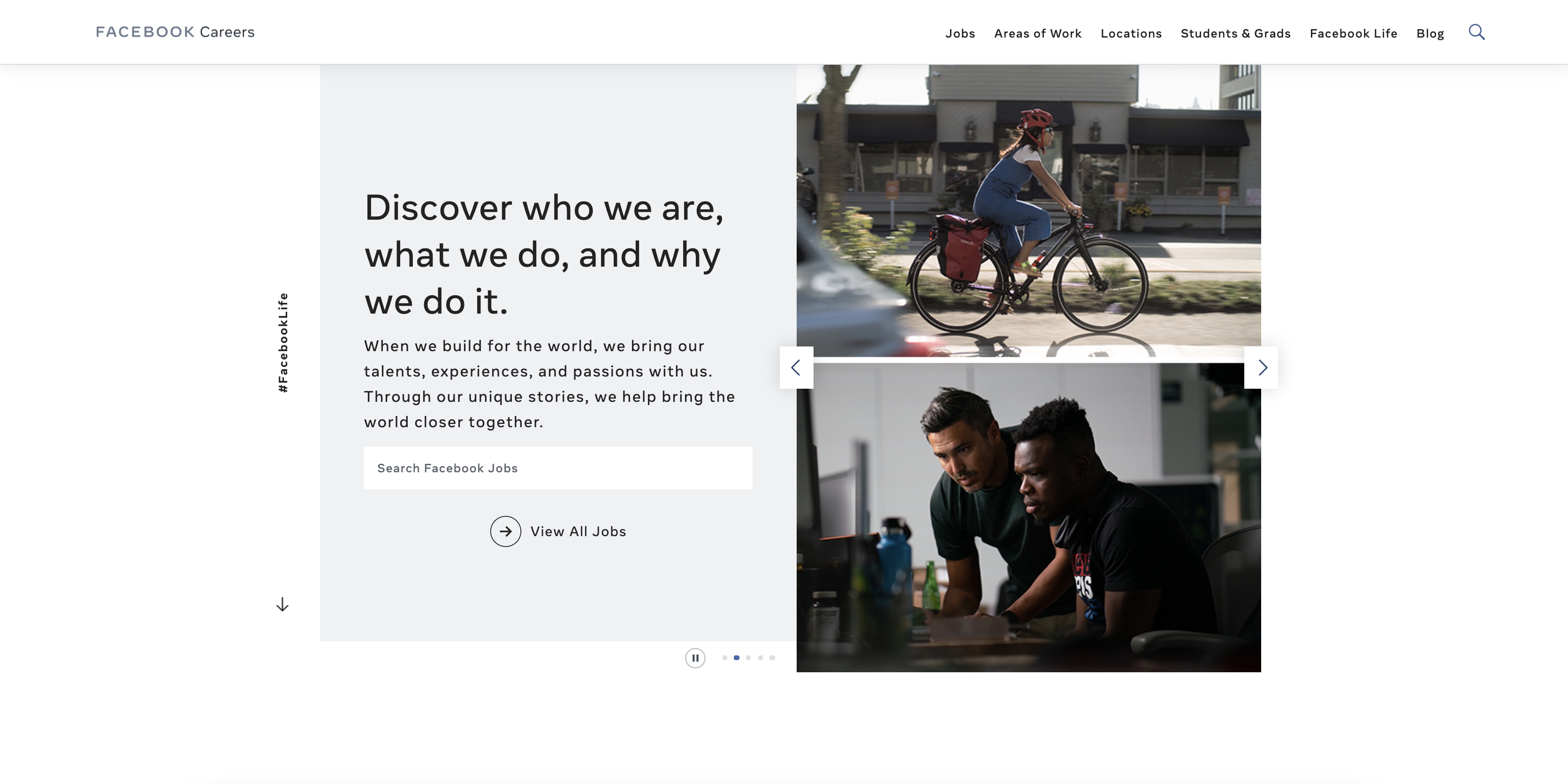
This one is a no brainer.
If there are companies at the top of your list or you just want to look up that startup TechCrunch mentioned, your first stop is the careers section of their website.
Besides the obvious listing of positions they’re actively hiring for, there are often some gems that will help you if you decide to apply.
Look out for information about how the company defines their culture and mission (that'll help you with the behavioral interview) as well as how their hiring process works so you know what to expect.
Pro Tip
Most companies outsource their hiring pages and some of the filters and search capabilities on these platforms are not great (e.g. what if there's a new job posting for an org that doesn't yet exist. Where should that go on the career site?). Keep your options open by looking at jobs at a higher level, such as by general category (e.g. Engineering) or location.
And don’t forget, Remote is now often listed as a separate “location” on most career pages.
2. Job Search Websites (e.g. Indeed)
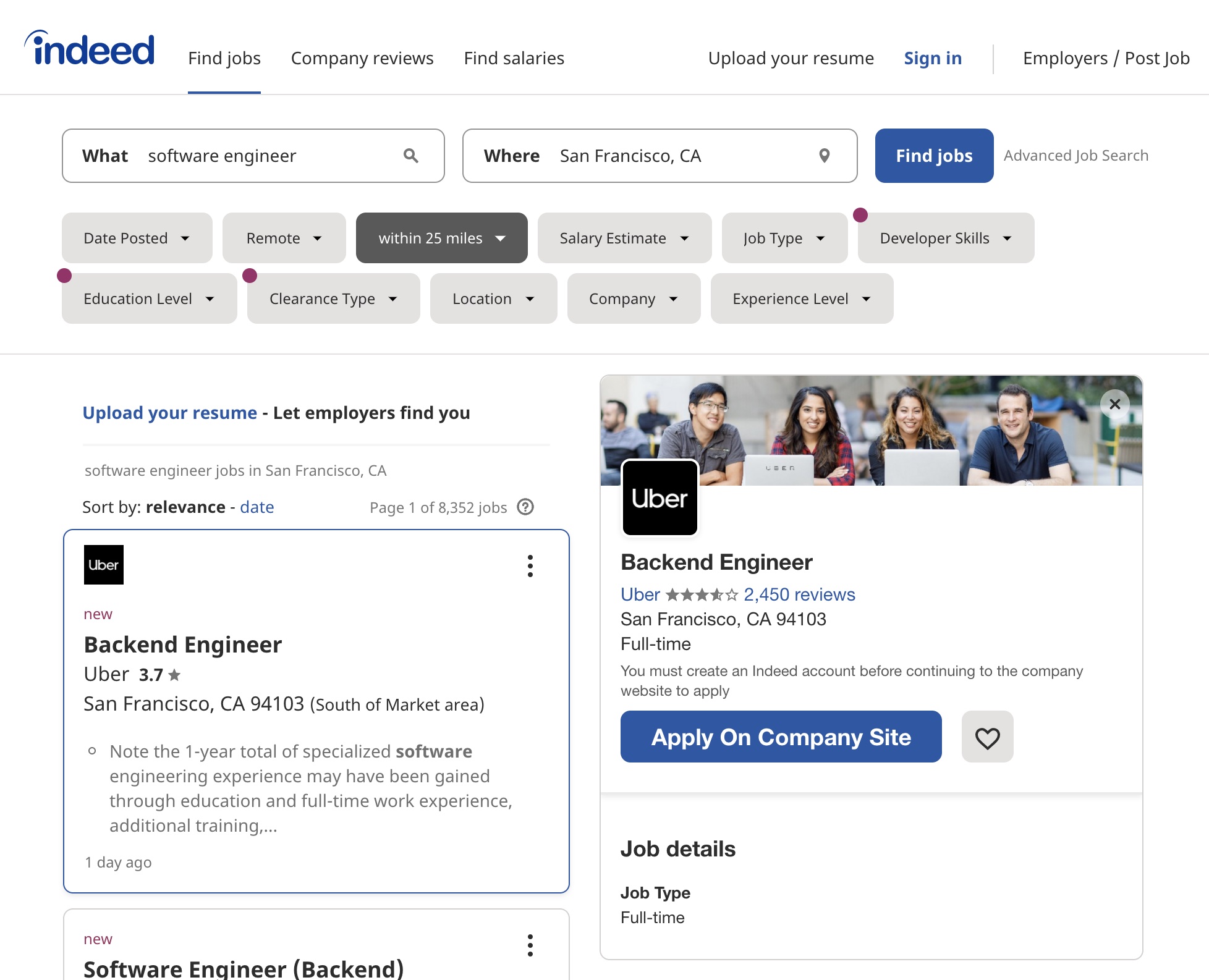
These platforms have a huge volume of listings and are often owned by a large company that aggregates postings across a portfolio of job boards.
Why check three job boards for postings when you can just look at one?
Pro Tip:
Indeed has started to add more context to job postings, such as company ratings and salaries. While you should take them with a pinch of salt, it at least saves you a trip to Glassdoor.
3. LinkedIn

I can always tell who’s looking for a job or who’s hiring just by how much activity they have on their LinkedIn account. Wherever you are in your job search, LinkedIn is going to be a part of it.
Job listings are only a part of what LinkedIn is about these days and the platform has really leaned into the social aspect as a way for company and prospective candidates (or business partners) to interact with each other.
Follow a page, connect with a former co-worker, or even apply for a job by using your profile as your resume, LinkedIn has it all.
Pro Tip:
LinkedIn is great for inbound leads where the recruiters are reaching out to you.
Create a profile, add a photo and some keywords to highlight your experience, and then let recruiter know you’re #OpenToWork. Now just wait for the connection requests to roll in.
4. Google Hacking

Most companies run their recruiting processes on applicant tracking systems like Lever or Greenhouse.
These are often used to power a company’s external careers website and typically have a url that looks something like boards.greenhouse.io/twilio
Enter Google Hacking
You can use the unique url structure of these career sites to turn Google into your own job search machine.
All you have to do is scope your search to these url structures, add some keywords of interest, and you're in business.
Pro Tip:
Try searching something like this
site:https://boards.greenhouse.io software engineer internship
5. Angel.co
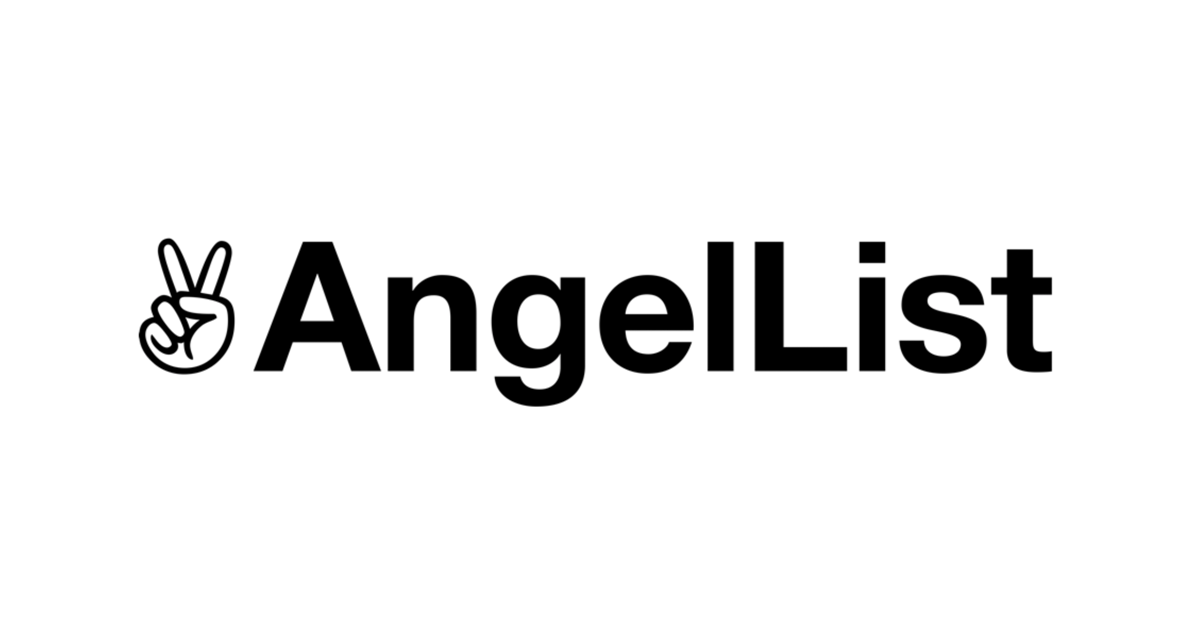
AngelList is the place to go for startup jobs.
Create an account and then start filtering by things like company size, location, and even salary range.
The platform is one of the first to really advocate a more transparent approach to compensation and a significant number of listings have a range specified for salary and equity compensation so no one is wasting their time.
Pro Tip:
Wondering if you’re getting a competitive startup offer? There’s a page where you can explore startup salary and equity trends by Role, Location, Skill, and Market.
6. Hiring Platforms (e.g. Hired, TripleByte)
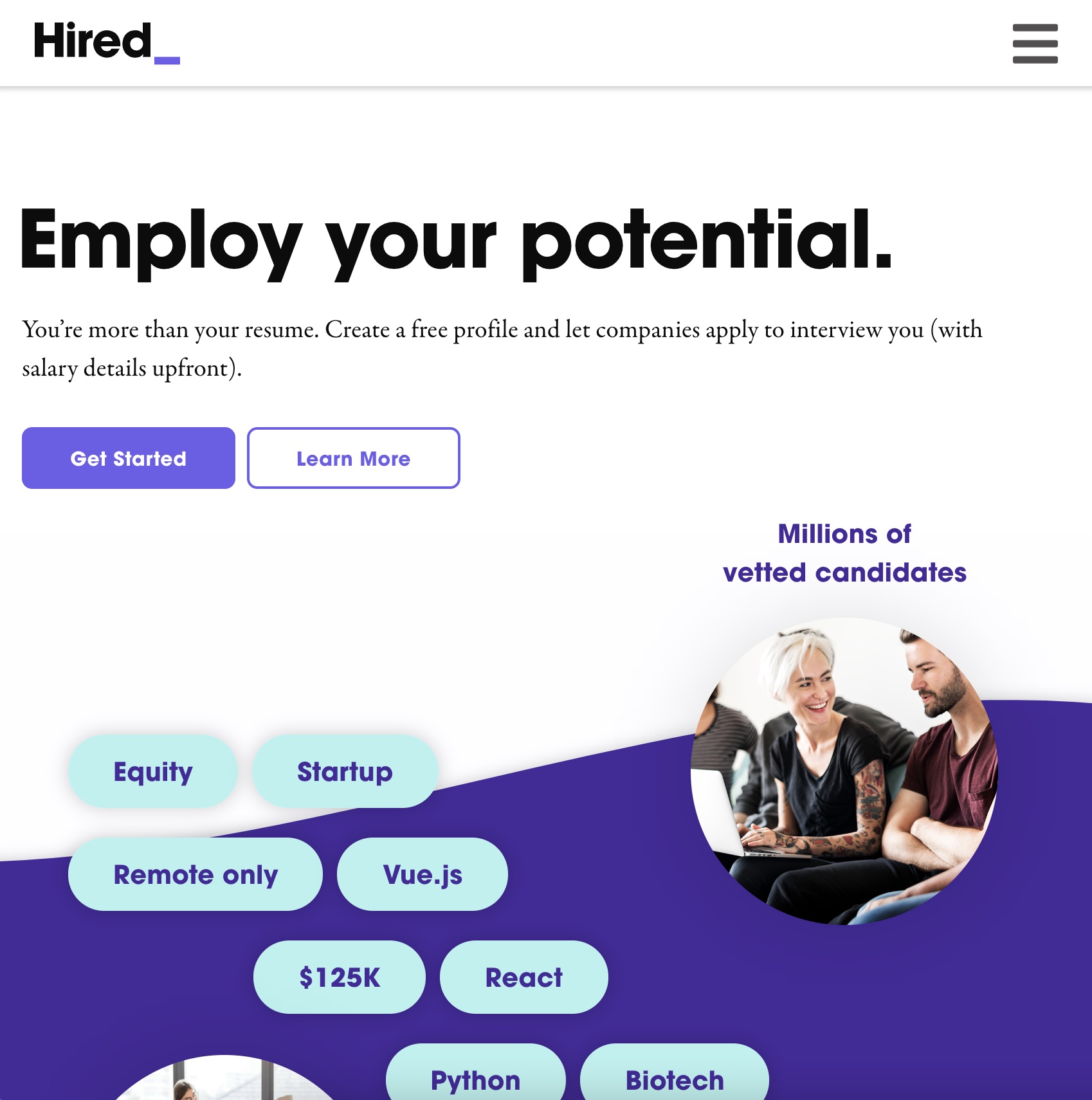
Hiring tech talent is hard and there are now platforms specifically catered towards applicants that aim to provide a better recruiting experience.
The pitch is that they’ll help you put your best foot forward and connect you with the right companies. In exchange, they take a commission or fee from the company once you're hired. The candidate pays nothing.
The only drawback? You have to apply to join the platform (there are often tests involved) and not everyone is accepted.
Pro Tip:
These platforms are ideal for talent which is not currently valued by the market correctly.
Maybe you didn’t know any better and accepted the first job offer you got right out of college without negotiating. Or perhaps life/immigration circumstances required you to take a less technical job at a substandard company and now you're having a hard time getting an interview anywhere good.
If you can meet the platform's bar for what a great potential hire looks like, they’ll get you in front of their partner companies and you’ll get your shot.
7. VC Job Boards
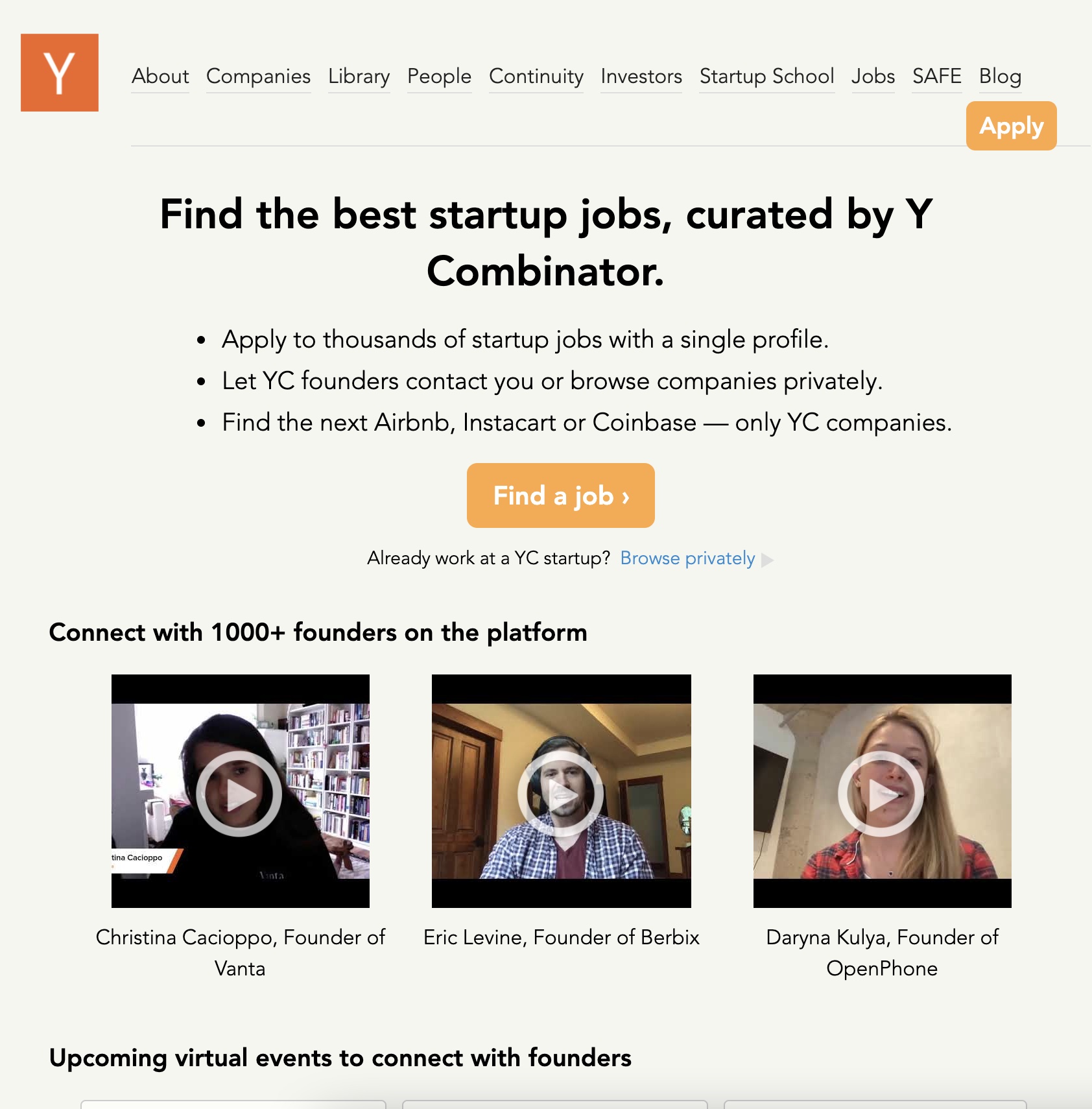
VC firms invest in a large number of companies and those companies need talent.
The solution? Most firms have a careers page showing all the open positions for their portfolio companies. You can often submit a general application and they’ll connect you with roles and companies which might be a good fit.
Examples include: Y Combinator, Greylock
Pro Tip:
Tired of refreshing the page to get the latest updates? If there’s no newsletter or Twitter account to follow, take matters into your own hands and use a webpage change detector to get notified when something new comes up.
8. Events and Meetups

The pandemic definitely makes this one hard but if you’re attending any conferences, hackathons, or meetups, whether virtually or online, check out the list of sponsors. They're often companies looking to hire.
Pro Tip:
Larger events like hackathons or conferences will often have booths where you can connect with a company’s recruiters directly.
Bring your resume and best elevator pitch because that's a great time to submit an application. It's a lot easier to stand out from a crowd when the recruiter knows your name.
9. Your Network

It’s not what you know but who you know.
People are generally nice and willing to help. Your friends even more so.
Leverage your network to help you with your job search by letting them know what you’re looking for and asking for a referral.
As you move up the career ladder, you might find that the best career opportunities are not advertised anywhere and are sometimes created just for the talent. Just think of all those big companies paying big bucks for a startup only to shut it down because they just wanted their talent (aka the acquihire)
Pro Tip:
Companies prioritize internal referrals from their employees when looking to hire for a position and often have dedicated SLAs for when a recruiter has to review them (e.g. within 3 business days).
At the very least, you’ll get a timely rejection and know where you stand.
Next steps
Once you’ve gotten a sense of what positions might be out there, it’s time to think about what exactly you’re looking for in your next role.
Having a clear sense of what you’re looking to achieve will help you create your shortlist of jobs you're actually going to apply to.
Plus it'll allow you to better communicate to recruiters, hiring managers, and your network, what you’re looking for next. Everyone loves a confident candidate with a clear vision.